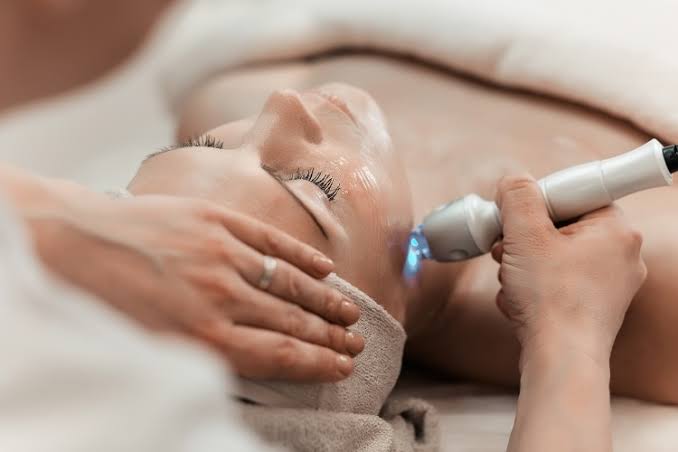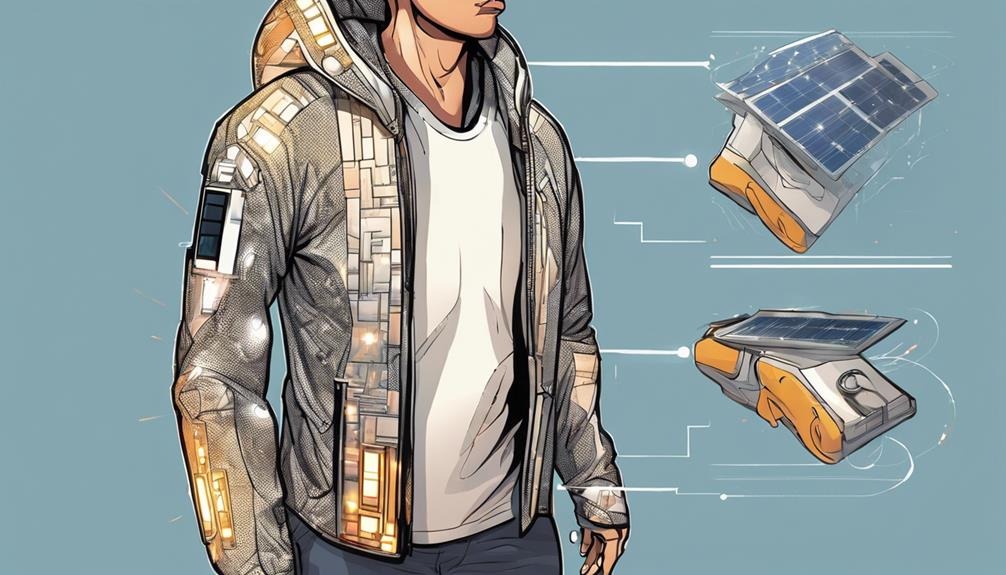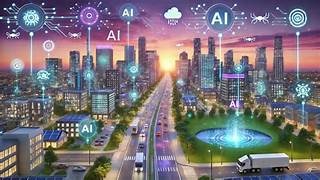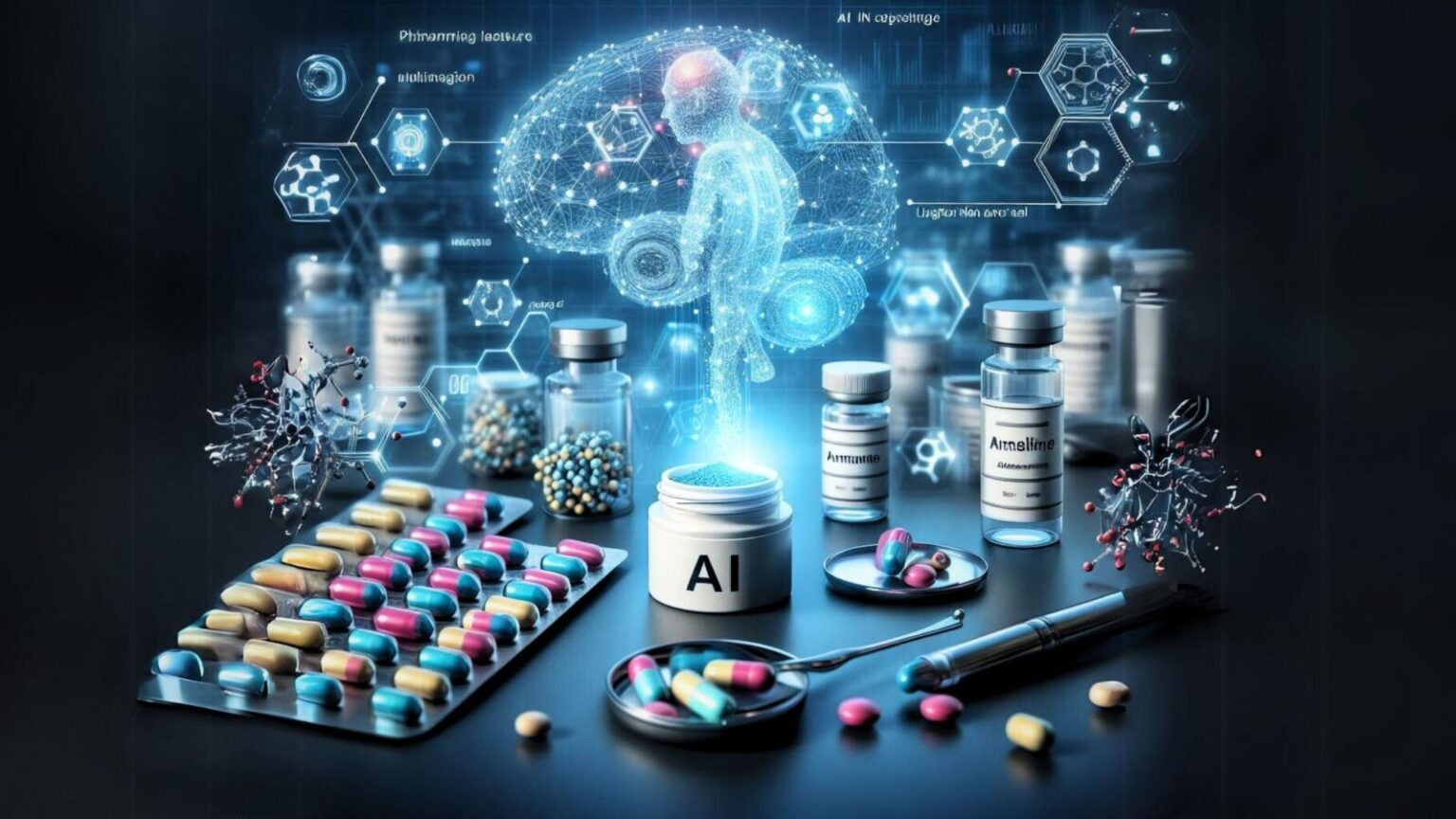
Advanced Technologies Revolutionizing Modern Dermatology
Advanced technologies are transforming dermatology with precision, personalization, and efficiency. AI, laser therapy, teledermatology, 3D printing, nanotechnology, robotics, optical imaging, gene therapy, and regenerative medicine allow earlier diagnosis, faster healing, and targeted treatments. Smart wearables empower patients to monitor their skin health daily.
✨ Raghav Jain

Introduction
The world of dermatology has undergone a remarkable transformation over the last decade. Once limited to topical treatments and basic surgical procedures, modern dermatology now leverages advanced technologies to diagnose, treat, and even prevent skin conditions with unprecedented precision. From AI-powered imaging systems to laser therapies, these innovations are reshaping how dermatologists understand and care for skin.
Skin is the body’s largest organ, protecting us from environmental threats and regulating temperature. Maintaining healthy skin is not only about beauty—it is closely linked to overall health. By embracing cutting-edge technologies, dermatology is moving towards more personalized, effective, and non-invasive treatments that benefit patients in ways previously unimaginable.
In this article, we will explore the revolutionary technologies in modern dermatology, their impact, practical uses, and how patients can optimize their skin care in this high-tech era. In the rapidly evolving field of medicine, dermatology has emerged as one of the specialties experiencing transformative changes, largely driven by advanced technologies. Modern dermatology is no longer confined to traditional methods of examination and treatment; it now leverages cutting-edge innovations to enhance diagnosis, improve patient outcomes, and streamline clinical workflows. The integration of technology has not only increased accuracy and efficiency but has also expanded the scope of dermatological care, offering solutions for conditions that were once difficult to manage.
One of the most remarkable technological advancements in dermatology is the development of digital imaging and dermoscopy. High-resolution digital cameras and dermatoscopes allow dermatologists to capture detailed images of the skin, enabling precise analysis of lesions, moles, and other dermatological anomalies. These images can be stored, compared over time, and shared with other specialists for consultation, enhancing collaborative care. The ability to digitally track changes in skin conditions has been particularly valuable in early detection of skin cancers such as melanoma. Early detection significantly improves treatment outcomes, and advanced imaging technologies have made this process more reliable than ever before.
Artificial intelligence (AI) has also begun to revolutionize dermatology by offering sophisticated diagnostic support. AI-powered algorithms can analyze skin images with remarkable accuracy, sometimes matching or even surpassing the diagnostic capabilities of human clinicians. Machine learning systems are trained on thousands of dermatological cases, enabling them to recognize patterns associated with various skin disorders. This technology is particularly useful in regions with limited access to dermatologists, as AI tools can provide preliminary assessments, guiding patients to seek timely medical attention. Additionally, AI integration in dermatology can assist in personalized treatment planning by predicting how patients might respond to specific therapies, thereby optimizing outcomes and reducing trial-and-error approaches.
Laser technology has long been a staple in dermatology, but recent advancements have taken its capabilities to unprecedented levels. Modern lasers are designed to target specific skin structures with precision, making them highly effective for a variety of conditions, including acne scars, vascular lesions, hyperpigmentation, and unwanted hair. Fractional lasers, for instance, create microscopic treatment zones while leaving surrounding tissue intact, promoting faster healing and minimizing side effects. Moreover, the combination of laser therapy with other modalities, such as photodynamic therapy, has enhanced treatment efficacy for complex dermatological conditions, providing patients with safer and more comfortable options.
Teledermatology has emerged as another transformative innovation, reshaping the way patients access dermatological care. Through secure digital platforms, patients can consult with dermatologists remotely by sharing images of their skin conditions and providing detailed histories. Teledermatology has proven invaluable for patients in rural or underserved areas, reducing the need for travel and ensuring timely interventions. During global health crises, such as the COVID-19 pandemic, teledermatology maintained continuity of care while minimizing exposure risks. Beyond convenience, teledermatology platforms often incorporate AI and automated triage systems, enhancing the efficiency of patient management and prioritizing urgent cases.
Another area where technology has significantly impacted dermatology is in the field of skin analysis and cosmetic dermatology. Advanced devices utilizing optical coherence tomography, confocal microscopy, and 3D imaging provide in-depth assessments of skin structure and health. These technologies enable dermatologists to offer personalized skincare recommendations and monitor the effectiveness of treatments over time. For cosmetic procedures, technologies such as radiofrequency devices, ultrasound therapy, and non-ablative lasers have revolutionized skin rejuvenation, wrinkle reduction, and body contouring, providing non-invasive alternatives with minimal downtime. The precision and safety of these treatments have increased patient satisfaction and broadened the appeal of dermatological aesthetics.
Robotics and automated systems are also beginning to find a place in dermatological practice. Robotic-assisted procedures enhance precision in microsurgeries, such as excision of skin cancers or complex reconstructive procedures. Automated platforms for tasks like mole mapping, biopsy collection, and medication dispensing improve workflow efficiency and reduce the potential for human error. These systems not only improve clinical outcomes but also allow dermatologists to dedicate more time to patient care and complex decision-making.
Moreover, the integration of wearable technology and mobile health applications is enabling continuous monitoring of skin health. Wearable devices equipped with sensors can track ultraviolet exposure, hydration levels, and other factors affecting the skin, providing patients with real-time feedback and preventive guidance. Mobile apps complement these devices by offering features such as symptom tracking, reminders for skincare routines, and educational resources. This combination empowers patients to take an active role in maintaining their skin health and facilitates more informed discussions with their dermatologists.
In addition to these innovations, advancements in biotechnology and pharmacology are reshaping dermatological treatments. Personalized medicine, driven by genetic and molecular profiling, allows dermatologists to tailor therapies to an individual’s unique biological characteristics. Targeted therapies for conditions like psoriasis, atopic dermatitis, and melanoma have become more effective, with fewer side effects compared to conventional treatments. Biotechnology innovations, including stem cell therapies and regenerative medicine, hold promise for repairing and rejuvenating damaged skin, offering solutions that were once thought impossible.
The impact of advanced technologies on dermatology extends beyond patient care to research and education. High-tech imaging, AI modeling, and data analytics are accelerating dermatological research by providing deeper insights into skin diseases, treatment responses, and epidemiological trends. Medical students and residents now have access to virtual simulations, 3D models, and interactive learning platforms, enhancing their training and preparing them to leverage these technologies in clinical practice.
In conclusion, modern dermatology is experiencing a profound transformation driven by advanced technologies. From digital imaging and AI-powered diagnostics to laser therapies, teledermatology, wearable devices, and personalized medicine, these innovations are revolutionizing the way skin health is assessed, treated, and managed. Patients now benefit from more accurate diagnoses, effective treatments, and convenient access to care, while dermatologists are equipped with powerful tools to enhance clinical decision-making and improve outcomes. As technology continues to advance, the future of dermatology promises even greater precision, accessibility, and innovation, making skin care more personalized, efficient, and effective than ever before.
Understanding Modern Dermatology
Modern dermatology goes beyond treating acne, rashes, or cosmetic concerns. It focuses on:
- Early diagnosis of skin diseases including skin cancer
- Precision treatment using minimally invasive techniques
- Long-term skin health management using data-driven approaches
Healthy skin requires a combination of proper care, early intervention, and treatment of underlying conditions. Advanced technologies allow dermatologists to provide faster, safer, and more personalized care, ultimately improving outcomes and patient satisfaction.
Key Advanced Technologies in Dermatology
1. Laser and Light-Based Therapies
Lasers have become a cornerstone in dermatology, offering solutions for:
- Acne scars, wrinkles, and pigmentation
- Hair removal and vascular lesions
- Skin resurfacing and rejuvenation
How it works:
Lasers target specific skin layers or chromophores (pigments) without damaging surrounding tissue. This precision allows faster healing, minimal downtime, and effective results.
Popular advancements:
- Fractional CO₂ lasers for skin resurfacing
- Pulsed dye lasers for treating vascular issues
- IPL (Intense Pulsed Light) for pigmentation and sun damage
2. Artificial Intelligence (AI) in Diagnosis
AI-powered tools are revolutionizing skin disease detection:
- Early detection of skin cancer: AI algorithms analyze images of moles and lesions for malignant signs with high accuracy.
- Automated skin analysis: Apps can detect acne, pigmentation, and wrinkles, providing real-time assessments.
- Personalized treatment recommendations: AI predicts the most effective interventions based on patient history and skin type.
Benefits:
Faster diagnosis, reduced human error, and more efficient patient management.
3. Teledermatology
Teledermatology allows patients to consult dermatologists remotely using video calls, apps, or secure messaging.
Advantages:
- Immediate access to expert advice
- Reduces the need for travel
- Facilitates follow-up care and chronic condition management
Who benefits most:
People in rural areas, busy professionals, and patients seeking privacy.
4. 3D Imaging and Skin Mapping
3D imaging systems capture high-resolution images of the skin, allowing dermatologists to:
- Track changes in moles, wrinkles, and scars
- Monitor the progression of skin conditions over time
- Customize cosmetic treatments with precision
Example: VISIA complexion analysis provides detailed insights into sun damage, pore size, and pigmentation, enabling targeted interventions.
5. Microneedling and Radiofrequency (RF) Technology
Microneedling involves tiny needles creating micro-injuries that stimulate collagen production. Combined with RF energy, it offers:
- Scar reduction and skin tightening
- Improved texture and elasticity
- Minimal downtime and high safety
These treatments are effective for acne scars, stretch marks, and aging skin.
6. Biologics and Molecular Dermatology
Advanced dermatology now targets conditions at the molecular level. Biologics are medications derived from living cells that treat immune-related skin disorders like:
- Psoriasis
- Atopic dermatitis
- Severe eczema
How it helps:
Biologics specifically target inflammatory pathways, reducing systemic side effects and improving long-term outcomes.
7. Robotics and Automated Surgical Tools
Robotics in dermatologic surgery enhances precision for:
- Mohs micrographic surgery (skin cancer removal)
- Cosmetic procedures like eyelid lifts or mole excisions
Benefits:
Reduced scarring, shorter recovery, and highly accurate results.
Benefits of Advanced Dermatology Technologies
- Early Detection and Prevention
- AI and imaging tools detect skin cancers and lesions before they become serious.
- Personalized Treatments
- Data-driven analysis allows dermatologists to tailor therapies to each patient’s unique skin profile.
- Minimally Invasive Procedures
- Laser and microneedling techniques reduce pain, downtime, and complications.
- Improved Patient Education
- 3D imaging and apps help patients visualize progress, motivating better adherence to treatment plans.
- Holistic Skin Care
- Technologies help manage both aesthetic and medical concerns in a single plan.
Daily Practices to Support Skin Health in a Tech-Driven Era
Morning Routine:
- Cleanse with gentle cleanser
- Apply antioxidant serum (Vitamin C)
- Use broad-spectrum sunscreen
Midday Boost:
- Hydrate frequently
- Apply moisturizer if skin feels dry
- Limit exposure to screens with blue-light filters
Evening Ritual:
- Double cleanse to remove makeup and pollutants
- Apply night cream with retinol or peptides
- Gentle massage or facial tool for circulation
Weekly Habits:
- Exfoliate with safe products or devices
- Track progress with a skin app or photo journal
- Schedule check-ins with dermatologist for tech-assisted monitoring
Common Skin Issues and How Technology Helps
Acne:
- Laser and blue light therapy reduce bacteria and inflammation
- AI apps suggest customized treatment plans
Hyperpigmentation:
- IPL and fractional lasers target pigmentation
- 3D imaging tracks improvement
Aging Signs:
- RF microneedling and peptide serums stimulate collagen
- Skin mapping helps monitor fine lines
Skin Cancer:
- AI screening detects suspicious moles early
- Robotic surgery ensures precise removal
Myths About Modern Dermatology: Busted!
“High-tech dermatology is only cosmetic.”
→ False! Advanced technologies also treat medical conditions like psoriasis, eczema, and skin cancer.
“Lasers and microneedling are painful and risky.”
→ Not true. With proper guidance, these are minimally invasive with high safety.
“AI can replace a dermatologist.”
→ Incorrect. AI aids diagnosis, but expert judgment is essential for treatment.
“Only the wealthy can access modern dermatology.”
→ Many teledermatology and AI tools are now affordable and accessible globally.
“Technology will make traditional skincare obsolete.”
→ Wrong. Daily skincare and healthy habits remain essential; technology complements, not replaces them.
Sample Tech-Enhanced Skin Care Routine
Morning:
- Gentle cleanser + antioxidant serum
- Sunscreen + optional blue-light protective cream
- Facial massage using a handheld device
Midday:
- Hydrate, snack on antioxidant-rich foods
- Short screen breaks to reduce stress on skin
Evening:
- Double cleanse + exfoliation with micro-roller or gentle scrub
- Apply retinol/night cream
- Use LED mask for targeted treatment (optional)
Weekly Add-ons:
- AI skin assessment or 3D imaging
- Laser therapy session if prescribed
- Teledermatology consultation for progress check
Conclusion
The fusion of advanced technologies with dermatology is reshaping how we care for our skin. From AI-powered diagnostics to precision lasers, modern dermatology now offers personalized, minimally invasive, and highly effective treatments.
By embracing these innovations alongside daily skincare habits, patients can prevent issues before they arise, optimize aesthetic results, and maintain healthy skin for life.
Whether your goal is to treat a persistent skin condition, prevent aging, or simply understand your skin better, modern technologies provide the tools to achieve smarter, safer, and more effective outcomes.
Invest in your skin today. With technology and consistent care, your skin will reflect health, vitality, and confidence tomorrow.
Q&A Section
Q1:- What is the role of Artificial Intelligence in modern dermatology?
Ans :- AI analyzes skin images and patient data to detect conditions like melanoma early, improving diagnostic accuracy and reducing the need for invasive tests.
Q2:- How are Laser Technologies used in skin treatments?
Ans :- Advanced lasers target pigmentation, scars, wrinkles, and hair removal with precision, minimizing damage to surrounding tissue and reducing recovery time.
Q3:- What are the benefits of Teledermatology for patients?
Ans :- Teledermatology enables remote consultations via digital platforms, providing faster diagnosis, continuous monitoring, and access for patients in underserved areas.
Q4:- How is 3D Printing applied in dermatology?
Ans :- 3D printing creates customized skin grafts, prosthetics, and wound dressings, enhancing treatment for burns, injuries, and reconstructive procedures.
Q5:- What advancements have smart wearable devices brought to skin health?
Ans :- Wearables monitor UV exposure, hydration, and skin temperature, helping patients prevent damage, track conditions, and optimize skincare routines.
Q6:- How is Nanotechnology enhancing dermatological treatments?
Ans :- Nanoparticles deliver drugs and active ingredients precisely into skin layers, increasing treatment efficacy while minimizing side effects for conditions like acne and eczema.
Q7:- What role does Robotics play in dermatology procedures?
Ans :- Robotic-assisted devices improve precision in microsurgeries, biopsies, and cosmetic procedures, ensuring consistent results with minimal human error.
Q8:- How do Optical Imaging Technologies aid dermatologists?
Ans :- High-resolution imaging like confocal microscopy and OCT allows non-invasive, real-time visualization of skin layers, supporting accurate diagnosis and treatment planning.
Q9:- What impact does Gene Therapy have in dermatology?
Ans :- Gene therapy targets genetic skin disorders, offering potential cures for conditions like epidermolysis bullosa and reducing long-term treatment dependency.
Q10:- How is Regenerative Medicine transforming skin repair and aesthetics?
Ans :- Stem cells and growth factors promote tissue regeneration, wound healing, and anti-aging treatments, making recovery faster and results more natural.
Similar Articles
Find more relatable content in similar Articles

Solar-Powered Wearables: Can T..
Solar-powered wearables are re.. Read More

Smart Cities: How Technology I..
Smart cities are transforming .. Read More

AI-Powered Hackers: The New Cy..
In 2025, cyber threats have en.. Read More

AI in Drug Discovery: Faster C..
Artificial Intelligence is rev.. Read More
Explore Other Categories
Explore many different categories of articles ranging from Gadgets to Security
Smart Devices, Gear & Innovations
Discover in-depth reviews, hands-on experiences, and expert insights on the newest gadgets—from smartphones to smartwatches, headphones, wearables, and everything in between. Stay ahead with the latest in tech gear
Apps That Power Your World
Explore essential mobile and desktop applications across all platforms. From productivity boosters to creative tools, we cover updates, recommendations, and how-tos to make your digital life easier and more efficient.
Tomorrow's Technology, Today's Insights
Dive into the world of emerging technologies, AI breakthroughs, space tech, robotics, and innovations shaping the future. Stay informed on what's next in the evolution of science and technology.
Protecting You in a Digital Age
Learn how to secure your data, protect your privacy, and understand the latest in online threats. We break down complex cybersecurity topics into practical advice for everyday users and professionals alike.
© 2025 Copyrights by rTechnology. All Rights Reserved.